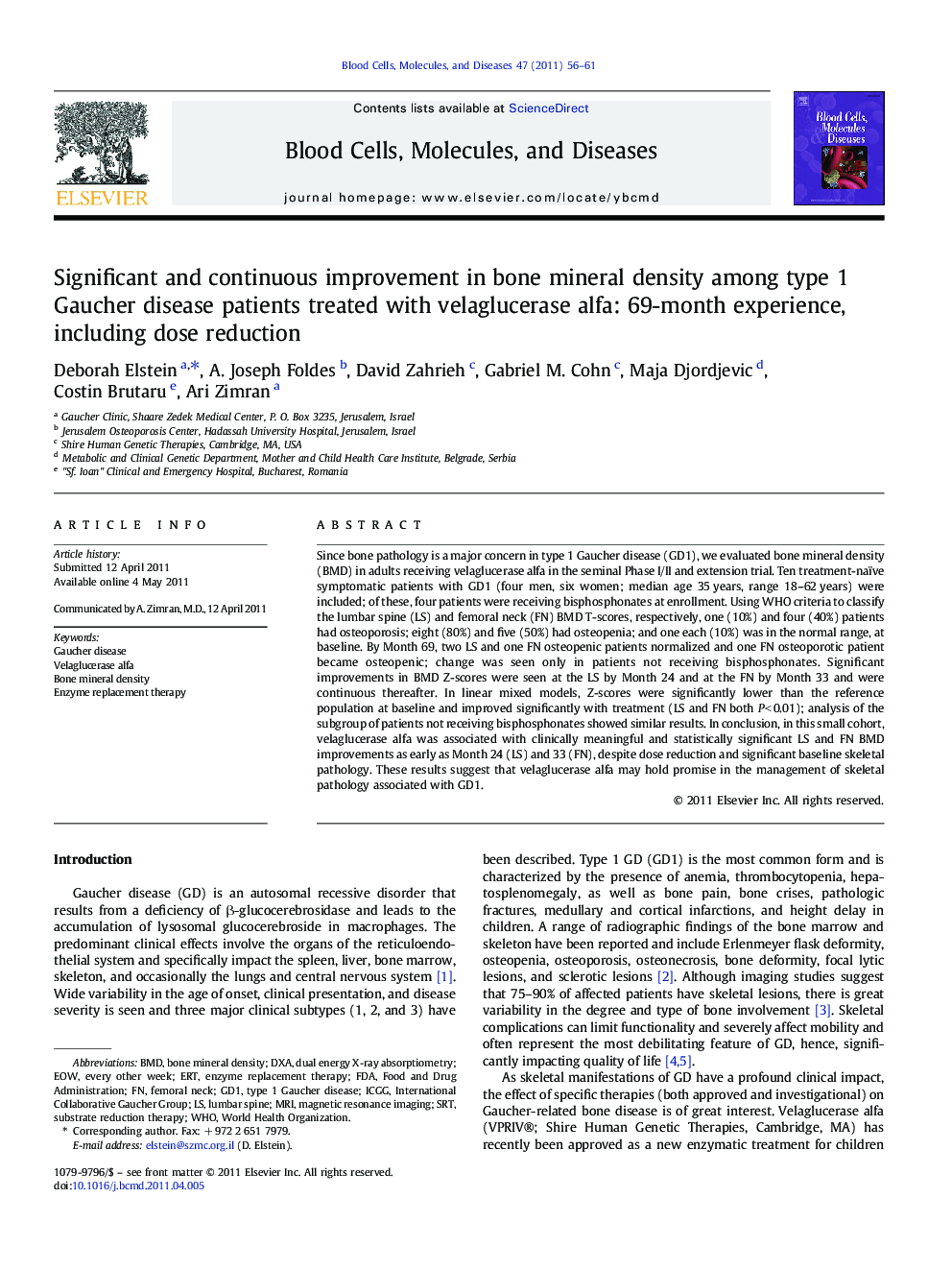| Article ID | Journal | Published Year | Pages | File Type |
|---|---|---|---|---|
| 2827783 | Blood Cells, Molecules, and Diseases | 2011 | 6 Pages |
Since bone pathology is a major concern in type 1 Gaucher disease (GD1), we evaluated bone mineral density (BMD) in adults receiving velaglucerase alfa in the seminal Phase I/II and extension trial. Ten treatment-naïve symptomatic patients with GD1 (four men, six women; median age 35 years, range 18–62 years) were included; of these, four patients were receiving bisphosphonates at enrollment. Using WHO criteria to classify the lumbar spine (LS) and femoral neck (FN) BMD T-scores, respectively, one (10%) and four (40%) patients had osteoporosis; eight (80%) and five (50%) had osteopenia; and one each (10%) was in the normal range, at baseline. By Month 69, two LS and one FN osteopenic patients normalized and one FN osteoporotic patient became osteopenic; change was seen only in patients not receiving bisphosphonates. Significant improvements in BMD Z-scores were seen at the LS by Month 24 and at the FN by Month 33 and were continuous thereafter. In linear mixed models, Z-scores were significantly lower than the reference population at baseline and improved significantly with treatment (LS and FN both P < 0.01); analysis of the subgroup of patients not receiving bisphosphonates showed similar results. In conclusion, in this small cohort, velaglucerase alfa was associated with clinically meaningful and statistically significant LS and FN BMD improvements as early as Month 24 (LS) and 33 (FN), despite dose reduction and significant baseline skeletal pathology. These results suggest that velaglucerase alfa may hold promise in the management of skeletal pathology associated with GD1.
